2018-2019
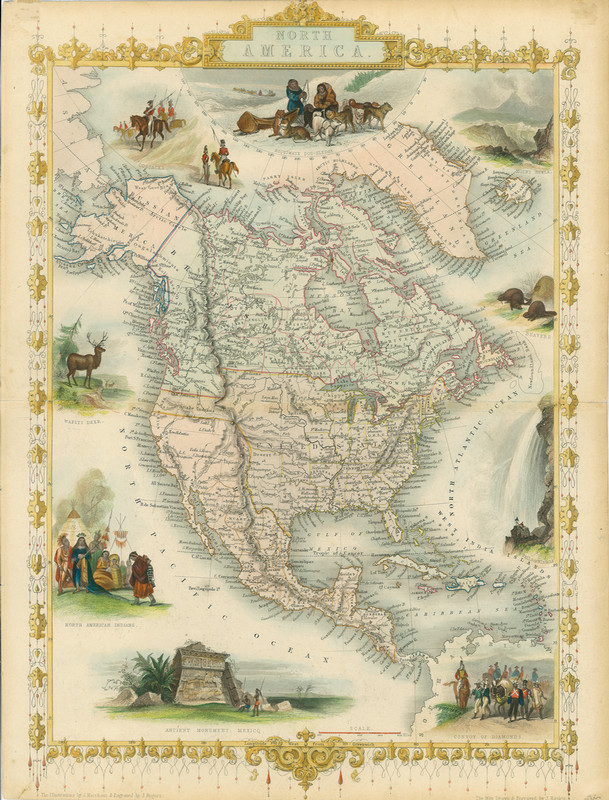
Manus Festus: Selected Prints from the Meri Jaye Collection
November 15 - December 14, 2019 | Paxson Gallery
Drawing on recent gifts of 18th- and 19th-century prints to the Permanent Collection, Manus Festus traces the variety of purposes printed imagery was made to serve. The Latin phrase evolved over centuries, but originally meant “hand-struck,” like all the works in this exhibition. Included are some of the earliest images of Native Americans and scenes of indigenous customs in North America. Also on view are landscapes from the western frontier and maps delineating shipping routes, land use, and inland waterways.
Selected prints from these gifts to the MMAC tell the story of a remarkable collection and a generous donor. The exhibition also documents the astonishing development of the printed image over some 120 years. These prints are more than illustrations of colonialism; they arguably constitute the idea of Manifest Destiny, the philosophy that drove 19th-century territorial expansion in the United States.
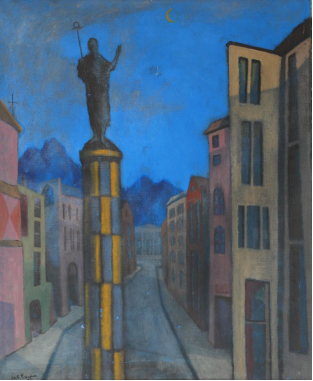
Blue Mountain,1951
Oil on canvas
Courtesy Private Collection
Jack Franjevic: Montana Modernist
September 13 - December 14, 2019 | Meloy Gallery
This exhibition spans the career of an artist whose oeuvre traverses the vast expanse of European and American modernism, from post-impressionist scenes recalling the work of Paul Gauguin to New-York-style Abstract Expressionism and Pop Art. The generic title of “modernist” might therefore seem apt, but it warrants scrutiny.
After serving in the Army Air Corps in the second world war, Jack Franjevic was stationed in Great Falls. After relocating to Illinois, where he attended the Art Institute of Chicago, he went on to teach art at Grinnell College in Iowa, eventually returning to Montana to accept a professorship at a new liberal arts school – the College of Great Falls. During his tenure there he taught students who would go on to become creative titans in the state, including Steve and Bev Glueckert, James Todd, and others.
Like fellow war veterans and college professors Aden Arnold, Rudy Autio, Walter Hook and Peter Voulkos, Franjevic was a conduit that connected Montana artists to the art world beyond the Rocky Mountain West. Indeed, during his 1969 sabbatical tour of England, France, Germany and Italy, he visited museums, obsessively photographing in city after city, museum after museum. Franjevic proceeded to invent a new medium, the Photostat, transferring photo images onto silkscreen onto canvas. If his earlier paintings seemed to comb European modernist styles, this new body of work combined realism with abstraction to transcend geographic space. In this sense, Jack Franjevic became a distinctly Montana modernist.
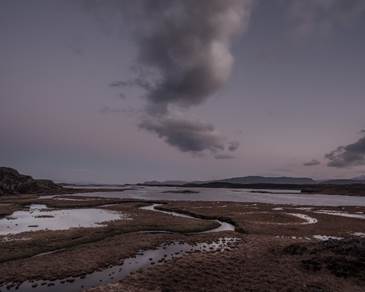
Matthew Hamon: Ratljóst
July 12 - October 31, 2019 | Paxson Gallery
Whatever one’s philosophical inclination, light is intrinsic to our physical and spiritual selves. It gives us the power of vision so that looking and consequent ‘seeing’ is possible. Because the evolution of human intelligence is primarily based on information we have gathered through vision, light has come to mean illumination and enlightenment, a possession of the mind. Not only does it reveal what is around us, it also makes known that which is inside us. That illumination is often spiritual in nature, applied both to God as the source of divine light and to individuals who manifest it.[1]
Award-winning photographer and professor Matthew Hamon created the arresting photographs in this exhibition partly while traveling in the Rocky Mountain West, and partly during a sabbatical that took him to Iceland. Through selections from that body of work, this exhibition contemplates a driving concept of Hamon’s creative work –Ratljóst. This Icelandic word translates to English as “sufficient light to find one's way.”
Herbert’s passage above prompts us to understand light, and through it our visual engagement with the natural world, as a portal to the sublime. Hamon’s photographs return us to a related 19th-century Romantic notion: that intense emotional states are a pure source of authentic aesthetic experience. This experience, with an emphasis on awe, even terror – especially when confronting the natural beauty of storms and wild landscapes, was thought to elevate human existence to something nobler than the scientific truths emerging from the forming scientific disciplines. Hamon’s pictures move us to consider that elevation of human existence, and to question our connection to place – even places thousands of miles apart – through myriad, complex stories of travel, work, home, and heritage.
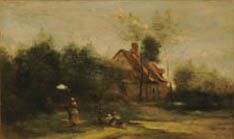
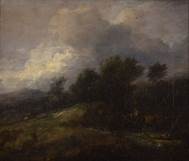
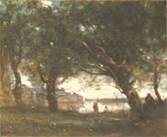
The William A. Clark Collection:A Homecoming
October 4 - August 31, 2019 | Meloy Gallery
This exhibition features nine works by Jean-Baptiste-Camille Corot, Jean-Charles Cazin, Jules Dupré, Jean-Honoré Fragonard, Thomas Gainsborough, and a sculpture attributed to Donatello – all new gifts from the Trustees of the Corcoran Gallery of Art to the MMAC Permanent Collection. The works once belonged to the estate of “Copper King” William Andrews Clark, a former Montana senator.
Born in 1839, Clark eventually made his way out West working the roles of farmer, teacher, soldier, prospector, woodcutter, teamster, cattle driver, grocer, mining engineer, banker and eventually a real estate tycoon and a railroad magnate. He became one the most powerful and influential 19th-century Americans with peers including John D. Rockefeller, J.P. Morgan and Andrew Carnegie. MMAC is one of the only non- Washington D.C. entities to receive works because of Clark’s important Montana history.
Stephanie J. Frostad: The Evocative Moment
February 28 - June 15, 2019 | Paxson Gallery
Through works spanning the artist’s career, this exhibition surveys Frostad’s creative concern with myths and metaphors brought to life as pictorial realism. The storytelling tradition is vital to her mission: to create a truly democratic art. “As a narrative painter,” she states, “my objective is to present the essential elements of a story […]” In striving toward this aim, she builds pictures that are sometimes joyful, sometimes mysterious, uncanny, even dark.
In the most arresting works, the viewer is struck with a prevailing sense that a pivotal event is looming, or has just taken place. By her own description, this is no accident: “With careful measures of clarity and ambiguity, I hope to create imaginative space for viewers to bring their own perspectives and experiences into the tale.”
In her most recent compositions, Frostad returns to drawing, using graphite to delineate form while imbuing her work with an enigmatic aura. This quality lends her stories a seemingly supernatural, yet universal quality, a morality perhaps most closely identified with fables. Indeed, her fascination with traditions and myths is befitting her long-standing inquiry into identity, relationships, community, and place. As she explains, “I explore these with equal interest in the actual and the metaphorical, striving always to combine convincing naturalism with provocative symbolism.” Ultimately, Frostad is fulfilled by the response her pictures bring about in her viewers, as they respond with their own stories.

Jason Clark, Winona and the Big Oil Windigo,
Woodcut and monotype, 2014
MMAC Permanent Collection
Gift of UM School of Art

Corwin Clairmont
Footprint (Lewis and Clark series)
Mixed media, 2002
UM Art Siting Purchase (UM Rec Center)
Between Wisdom & Knowledge: Contemporary Native American Art
October 18 - February 16, 2019 | Paxson Gallery
Between Wisdom & Knowledge: Contemporary Native American Art explores themes of dislocation – geographical, cultural, and artistic – and the diverse and compelling creative strategies Native artists have used in pursuit of self-realization or, as scholar Gail Tremblay termed it, “an American Indian sensitivity to nature and to cultural constructions visible to an outsider examining U.S. urban culture for its contradictions.” Works on view will include selections from the MMAC Permanent Collection, recent gifts, and loans from private collectors including works by Jeneese Hilton, Jay Laber, Neil Parsons, Jaune Quick-to-See Smith, Kevin Red Star, Francis Wall, Anthony Yazzie and others.
